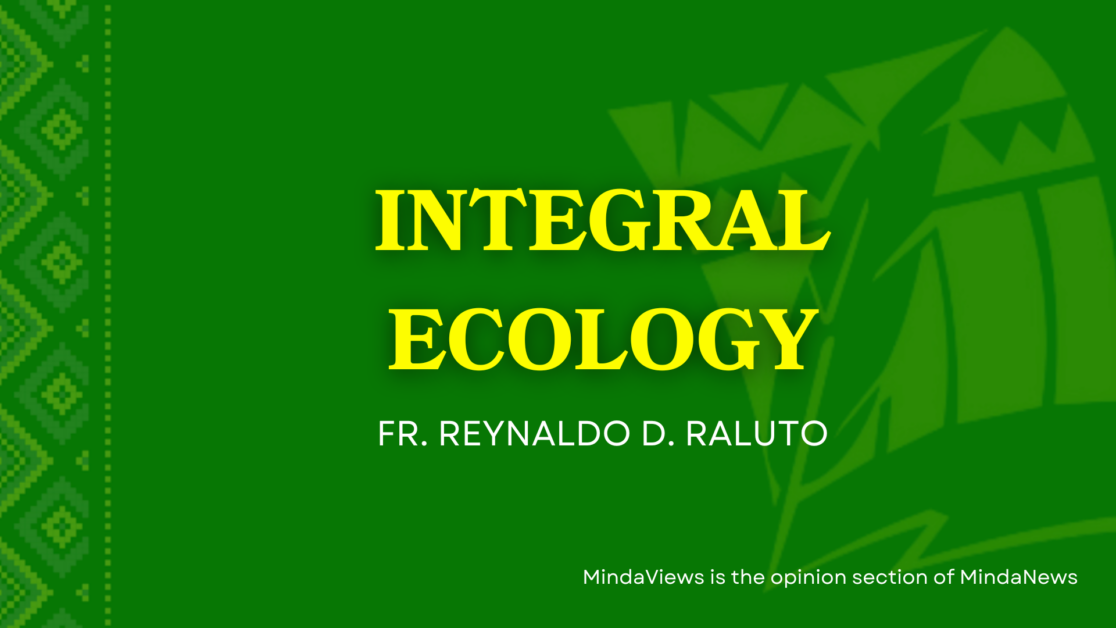INTEGRAL ECOLOGY: The CBCP’s Synodal and Ecological Retreat in Bukidnon

On July 2-4, 2024, the Catholic Bishops Conference of the Philippines (CBCP) held its annual holy retreat in the Monastery of the Transfiguration in Malaybalay City. The CBCP retreatants prayerfully reflected on the theme “Synod Spirituality: Embracing Ecology in the Light of Laudato Si’ and Laudate Deum.” I was humbled for having been given the privilege to facilitate this retreat together with Vincentian priest, Daniel Franklin Pilario.
While thinking of what to share as points for reflection, I was wondering why the CBCP has chosen Bukidnon as its venue for this year’s annual holy retreat? This was the first time that the CBCP held it in the Mindanao region. What can the Diocese of Malaybalay offer to make this holy retreat truly synodal and ecological?

Pope Francis, in his 2023 Message for the World Day of Prayer for the Care of Creation, uses the image of a mighty river to describe the emergence and operation of a synodal church. In the context of climate crisis, he believes that much can be done to prevent the worst from happening, “provided we come together like so many streams, brooks and rivulets, merging finally in a mighty river to irrigate the life of our marvelous planet and our human family for generations to come.”[1]
To me, to use Mighty River as metaphor for synodality offers a meaningful answer to my question on what Bukidnon can offer to synodal reflection. Bukidnon is the heart of Mindanao, the land of lakes and rivers. In fact, six out of eight major rivers in Mindanao have their main sources in the watersheds of Bukidnon, namely, Pulangi, Tagoloan, Maridugao, Cagayan, Salug-Davao, and Agusan-Cugman rivers.[2] Indeed, Bukidnon has been recognized as the “watershed province” of Mindanao, land of rivers and lakes.

The six major rivers in Mindanao continually receive from the estimated 321 tributaries that originate and crisscross from different corners of Bukidnon Province before they finally drain to the sea. The Pulangi River, for instance, is just a creek where it originates from the vast Kalabugao mountains in the town of Impasug-ong. But it becomes the second biggest river in the country because of its principal tributaries, namely, the Tigua River, the Sawaga River, the Manupali River, the Kulaman River, the Maramag River, and the Muleta River.
In the Cotabato area, where Pulangi River becomes the Rio Grande de Mindanao, its principal tributaries are the Maridugao River, the Kabakan River, and the Allah River. Seeing the crisscrossing and convergence of many creeks and brooks that led to the formation of the Bukidnon rivers should offer a powerful visual aid to reflect on synodality.
Moreover, the narrative of ecological struggles in Bukidnon can inspire the CBCP retreatants. Arguably, Bukidnon is not only an ecologically gifted province; it is also claimed as the cradle of environmental activism in the Philippines. It can be recalled that it was in the remote San Fernando parish in our diocese where the poor farmers successfully staged the series of pickets against loggers in 1987. Consequently, the DENR declared the Province of Bukidnon under logging moratorium and deputized as forest officers the 45 priests and deacons of the Diocese of Malaybalay in 1990.

The growing environmental activism in Bukidnon was fertilized by the blood of our very own diocesan priest and a deputized forest officer, Nery Lito Satur, who was violently killed on October 14, 1991 for courageously protecting the remaining forest of the province. To treasure his ecological legacy, the Sangguniang Panlalawigan of Bukidnon passed an ordinance that declares every 14th day of October as “Father Neri Satur Day in the Province of Bukidnon” effective on October 6, 2004. The people of Bukidnon gratefully remember Fr. Neri as an ember of hope that keeps burning the fire of our ecological advocacy.
I believe it was the Holy Spirit who guided the CBCP retreatants to choose Bukidnon as the venue to reflect on ecology and synod spirituality. Many of them, after knowing the narrative of Bukidnon ecological struggles and the ecological significance of Bukidnon in the ecosystem of Mindanao rivers, must have realized with hindsight why they had chosen to reflect their synodal and ecological theme here in this remote landlocked province in Mindanao.
[1] Pope Francis, Message of His Holiness Pope Francis for the World Day of Prayer for the Care of Creation (1 September 2023); https://www.vatican.va/content/francesco/en/messages/pont-messages/2023/documents/20230513-messaggio-giornata-curacreato.html.
[2] See Mindanao Development Authority, “Integrated River Basin Management in Mindanao Pushed,” Official Gazette (June 8, 2011); https://www.officialgazette.gov.ph/2011/06/08/integrated-river-basin-management-in-mindanao-pushed/.



No comments:
Post a Comment